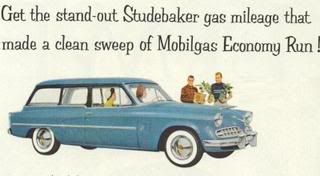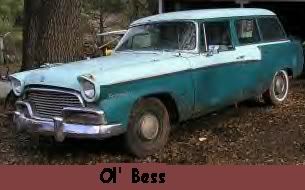OK, I was trying to pull the studs out of my driver's side manifold (they were pitted and pointing opposite directions), and I busted 'em right off. No sweat, I get out the extractor and start drilling.
An hour later, there is NO WAY those things are rotating out of their holes. So do I just keep drilling and hope I can get out the shell and re-tap the holes, or just say "screw it" and buy a new one?
Sigh... [V]
[img=left]http://members.cox.net/clarknovak/lark.gif[/img=left]
Clark in San Diego
'63 F2/Lark Standard
An hour later, there is NO WAY those things are rotating out of their holes. So do I just keep drilling and hope I can get out the shell and re-tap the holes, or just say "screw it" and buy a new one?
Sigh... [V]
[img=left]http://members.cox.net/clarknovak/lark.gif[/img=left]
Clark in San Diego
'63 F2/Lark Standard

 I must have three sets of useless manifolds here that have exactly the same problem.[8]
I must have three sets of useless manifolds here that have exactly the same problem.[8]




 Yeah, Biggs, you saved my life on that one. I didn't have the money to buy new ones. I'll be forever grateful to have been able to get the Champ going. I'd be walking otherwise.
Yeah, Biggs, you saved my life on that one. I didn't have the money to buy new ones. I'll be forever grateful to have been able to get the Champ going. I'd be walking otherwise.

Comment